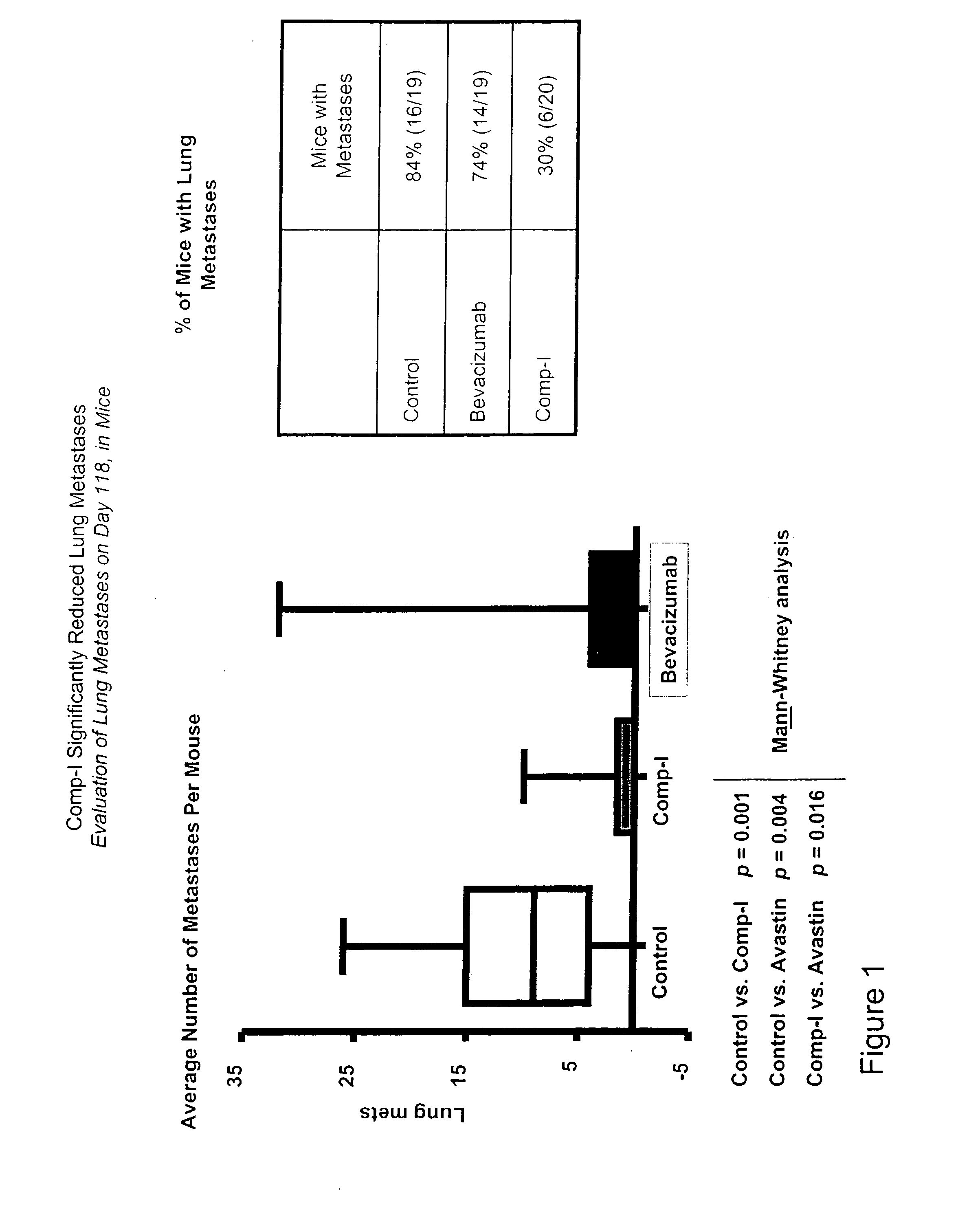Use of vegfr-2 inhibitors for treating metastatic cancer
a metastatic cancer and inhibitor technology, applied in the field of metastatic cancer treatment, can solve the problems of unsatisfactory treatment protocol, increased serious and undesirable side effects, patient subsequently die of secondary cancer growth, etc., and achieves better delivery or therapeutic properties, and more efficient production
- Summary
- Abstract
- Description
- Claims
- Application Information
AI Technical Summary
Benefits of technology
Problems solved by technology
Method used
Image
Examples
example 1
[0261]In an orthotopic model of tumor metastasis, Comp-I was substantially more active than bevacizumab. Human MDA-MB-231 breast cancer cells were implanted in the mouse mammary fat pads at day 0 (1×106 MDA-MB-231 breast cancer cells). The resultant tumors were resected at day 24 and treatment initiated 4 days later (Mean tumor volume at resection=400 mm3). Treatment groups were as follows: Control: PBS, Comp-I: 30 mg / kg, and bevacizumab 5 mg / kg (100 μL IP injections twice weekly). When mice were sacrificed, the extent of local regrowth and numbers of lung metastases were evaluated. Comp-I produced fewer macroscopic metastases per mouse than bevacizumab. Furthermore, Comp-I had a remarkable effect on the incidence of metastases in the study. Only 30% of Comp-1-treated mice showed lung metastases compared with 74% of bevacizumab-treated animals and 84% of the control cohort (see FIG. 1).
[0262]Sequence Listing
[0263]SEQ ID NO:1 is the tenth module of the human fibronectin type III doma...
PUM
| Property | Measurement | Unit |
|---|---|---|
| Fraction | aaaaa | aaaaa |
| Molar density | aaaaa | aaaaa |
| Chemotherapeutic properties | aaaaa | aaaaa |
Abstract
Description
Claims
Application Information
 Login to View More
Login to View More - R&D
- Intellectual Property
- Life Sciences
- Materials
- Tech Scout
- Unparalleled Data Quality
- Higher Quality Content
- 60% Fewer Hallucinations
Browse by: Latest US Patents, China's latest patents, Technical Efficacy Thesaurus, Application Domain, Technology Topic, Popular Technical Reports.
© 2025 PatSnap. All rights reserved.Legal|Privacy policy|Modern Slavery Act Transparency Statement|Sitemap|About US| Contact US: help@patsnap.com

